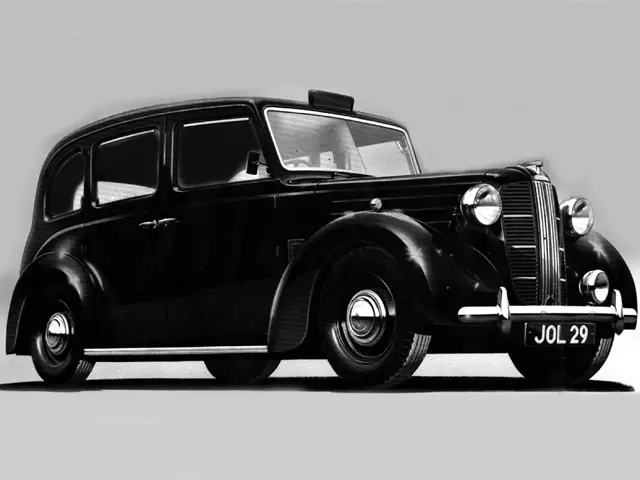The Austin FX3 at 75
14 September 2023
This year marks the 75th birthday of the Citroën 2CV, the Jaguar XK120, the Land Rover and the Morris Minor, to name but a few fine vehicles. The year 2023 also marks three-quarters of a century for one of the world’s most instantly recognisable taxis – the Austin FX3.
The narrative starts in 1945 when Mann & Overton, who then held the concession for the Austin taxi chassis throughout the capital, commissioned the new design. Longbridge would design the all-steel cab in 1945, with Carbodies of Coventry responsible for its construction. Taxi operators’ representatives also had an input into the design.

Given the straitened post-war economy, the damage suffered by Longbridge during WW2 and the limited development time, Austin understandably used surplus parts from the Sixteen saloon. Power was from the familiar 2,199cc “Big Four” engine, married to a four-speed gearbox; a three-speed transmission was thought unsuited to London traffic. Meanwhile, the Public Carriage Office ensured wide-opening rear doors as part of their Conditions of Fitness regulations, and the turning circle was just 25 feet.
The FX3 made its bow at the Mann & Overton showroom on Wandsworth Bridge Road in June of 1948. Commercial Motor praised how “the driver’s cab is fully enclosed, with sliding glass windows mounted above a central partition on the driver’s left”. Earlier open-sided Austin taxis left the cabbie exposed to the elements. Another welcome feature was the integral Jackall hydraulic jacking system, while the opening windshield allowed for demisting and additional visibility during a pea-souper fog. The FX3 even had a provision for a heater.
The latest Austin cab cost £936 1s 8d with fittings that included leather upholstery. It also created the tradition of the London black cab; this was the standard paint finish, and many operators were reluctant to pay extra for another shade. By 1949, it became one of the city’s first cabs with a two-way radio and, two years later, a very welcome all-hydraulic set-up replaced the hydro-mech braking.
Surprisingly, the FX3 was not initially available with a diesel engine, and it would not be until 1954 that Longbridge responded to aftermarket conversions by Standard, Perkins and Borgward. The FX3D cost £95 more than its petrol-powered stablemate and would eventually outsell the FX3 by nine to one. Post-1955 taxis featured distinctive “bunny ear” flashing indicators above the B-pillars; the previous semaphore trafficators were too vulnerable to damage from clumsy passengers.
In the late 1950s, Longbridge claimed: “ You see more Austin taxis on the streets of London than any other single make of cab”. The FX4 replaced the FX3 in 1958, but the older model still plied for hire in Charing Cross Road and along The Strand in 1968. The last examples remained in service in seaside resorts until as recently as the early 1970s.
When encountering an FX3 today, the first impression is of its height; this is a cab from when city gentlemen wore bowler hats. The second is the engine’s sheer noise, as the Carriage Office then believed that soundproofing was a potential fire hazard. And the third is, somewhat inevitably, Sidney James in Carry On Cabby. Here are some more impressions from a Classic & Sports Car test from 2018:
The passenger compartment is akin to being ensconced in a gentleman’s club and there is the sound of that engine, as redolent of the past as the gong on a Daimler ambulance or the clank of Button “A” in a public telephone box. The surroundings of Chatham only intensified the illusion of being en route to the Port of London Authority headquarters in Charterhouse Street although the fine weather was the antithesis of the standard image of the Austin FX3. For true authenticity, the headlamps should be battling with drizzle or thick fog somewhere near Wandsworth.
Plus, always remember to offer more than a 6d for a tip.
